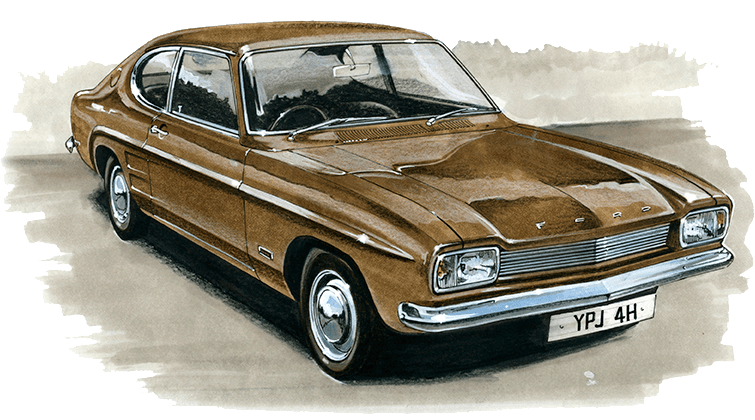
When it comes to classic cars that have become synonymous with a brand’s success, the Ford Capri stands out as a true icon. Launched in 1969, the Ford Capri quickly became a symbol of style, performance, and affordability. Its impact on Ford’s overall sales and market presence was nothing short of significant, making it a crucial part of the company’s history.
One of the key reasons for the Capri’s success was its innovative design. Ford recognized the growing demand for sleek, sporty vehicles that were accessible to the average consumer. The Capri was introduced as the European counterpart to the immensely popular Ford Mustang, boasting a similar fastback shape and aggressive stance. Its attractive design instantly captured the imagination of car enthusiasts across Europe.
The affordability of the Ford Capri was another major factor in its success. During a time when sports cars were often perceived as expensive luxury items, the Capri offered a sporty driving experience at a fraction of the cost. This accessibility allowed Ford to tap into a previously untapped market segment, attracting a whole new customer base. As a result, the Ford Capri became a best-seller and a strong contributor to increased sales for the company.
Another crucial aspect was the performance capabilities of the Ford Capri. It was available with a range of engines, from economical models to high-performance V6 and V8 variants. This versatility ensured that the Capri could cater to various customer preferences and budgets. The car was revered for its handling and driving dynamics, especially the sportier versions, providing a thrilling driving experience that added to its appeal.
Furthermore, the Ford Capri benefited from an extensive marketing campaign that emphasized its affordable luxury and aspirational image. The tagline “The Car You Always Promised Yourself” resonated with buyers and helped create a strong emotional connection to the brand. Ford capitalized on this by sponsoring various sports events and car races, showcasing the Capri’s capabilities and associating it with excitement and performance.
The Ford Capri’s success in Europe translated into increased market presence for Ford. It not only positioned Ford as a strong player in the sports car segment but also boosted its overall brand image and credibility. The Capri’s popularity served as a gateway for customers to explore other Ford models, contributing to the company’s overall sales performance.
While the Ford Capri may have ceased production in 1986, it left an indelible mark on Ford’s history. Its combination of attractive design, affordability, and exceptional performance resonated strongly with consumers and helped solidify Ford’s presence in the market. Today, the Ford Capri remains a highly sought-after classic car, cherished by collectors and enthusiasts worldwide, serving as a testament to its enduring impact on Ford’s overall sales and brand perception.